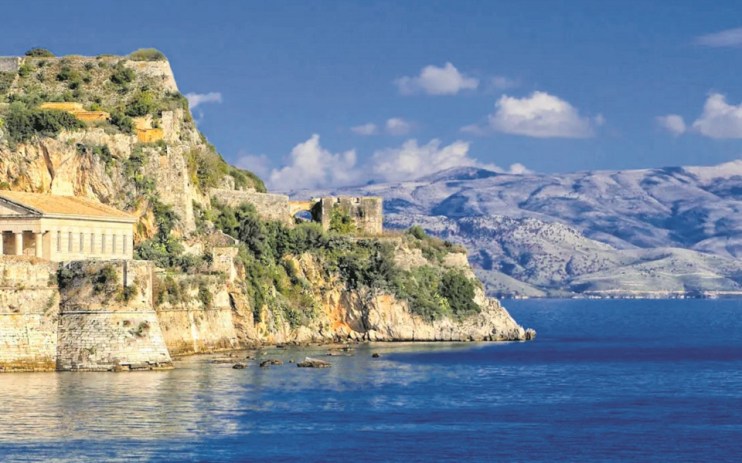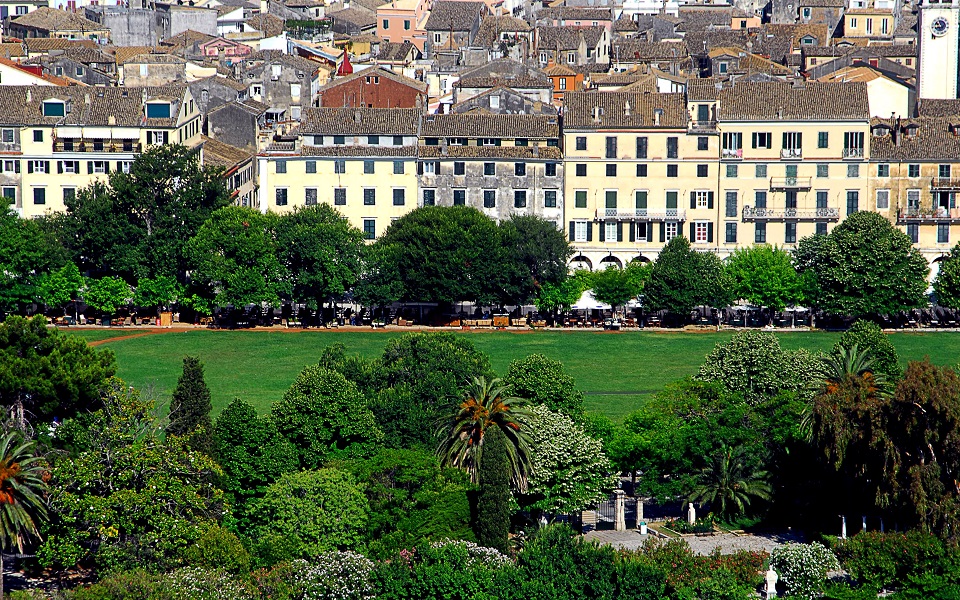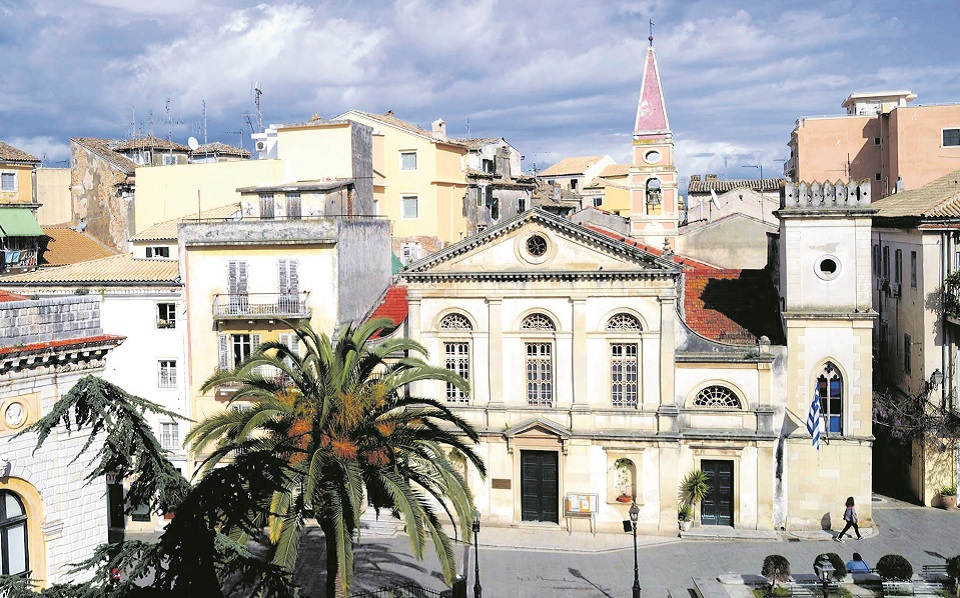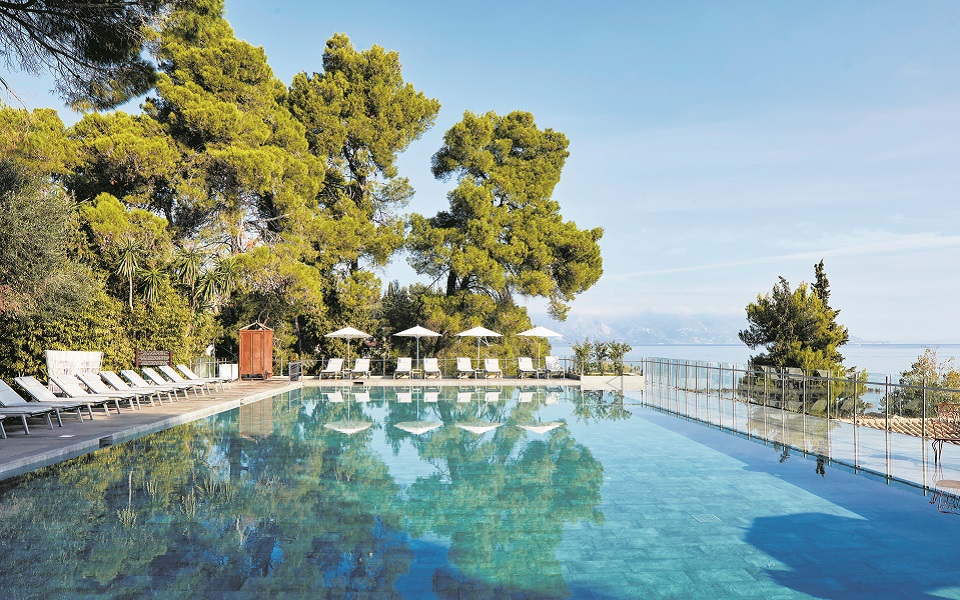Visit Corfu in the glorious autumn to get closer to the island’s enchanting history

The flight from Heathrow to Corfu soars above central Europe, then tracks the Adriatic coastline along the Balkans. Waiting to land at the airport beside Corfu Town, the plane circles the island, and looking out the window you’re well aware that you’re closer to Albania than to mainland Greece.
The surrounding sea — a brilliant turquoise-blue in every direction — is a not-so-subtle reminder that until the 20th century every coloniser, from the Ancient Greeks to the Venetians, the Ottomans to the British, had to get to Corfu by boat.
The extraordinary human history of Corfu drew me to visit the island when the hoardes of tourists had gone
Today’s arrivals mostly fly, and I assume they’re more likely to be holidaymakers than gods or warriors. For most British tourists, Corfu means sun, sand, and sea. If you have read the Ancient Greek myths, however, or you spent lockdown binge watching The Durrells on TV, you will know that the island also has an incredibly rich history and cultural heritage.

And the good news is that the peak summer season is over, and the boiled Brits, drunk on sunstroke and cocktails with paper umbrellas, have headed home, leaving the popular island relatively empty for us explorers lucky enough to be able to visit during school term times. You’ll find beaches nicely bubbling with the energy of locals, and many of the outdoor bars and restaurants still open well into October, as the weather holds steady until then.
But I had more on my mind than just flying and flopping, as Corfu has some incredible and beguiling history, much of it with British ties and it’s all well worth getting off the sun lounger for a day or two to explore. Corfu’s Old Town is a UNESCO World Heritage Site with Classical, Baroque, and Renaissance buildings, palaces, fortresses, and Orthodox churches amongst them.
This extraordinary human history drew me to the island. There are, after all, very few destinations where you can find 3,300 years of history in one place, and even fewer where the physical evidence of that history is so well preserved. At Gouvia, 5 km to the north of the town, the ruins of the mediaeval Venetian boat yard are overlooked by yachts moored in the modern marina.

A similar distance to the south of Corfu Town you’ll find yet more ancient wonders: the 6th century BC Temple of Artemis, the earliest-known Doric temple built entirely from stone; and its rough contemporary, Kardaki Temple, found accidentally by British engineers during a water survey. My hotel, the Kontokali Bay Resort and Spa, was within walking distance of the Venetian boat yard and looked across the bay at Corfu Town.
Kontokali is a prime base for an early morning sea swim and then a full day of sightseeing in the town. The hotel shuttle bus dropped me at the entrance to Corfu’s Old Fortress, which dominates the town’s skyline and is visible from a long way up the coast. The fort is complex, with layer upon layer of construction, a testament to Corfu’s complex past. Founded by the Byzantines in the mid 6th century, most of the surviving fortifications are Venetian and date from 800 years later.
The Venetians did a good job: a cleverly constructed sea moat was able to resist three Ottoman sieges between the 16th and 18th centuries. Thanks to the height of the fortress, it is a superb location to stand and look back at the Old Town. You see how everything drops away to the water, and that in spite of the urban density and the hot, dry climate, there are still bright green swathes of trees. The impact of these trees on the air and surface temperature is remarkable.

In high summer, Corfu sweats under a heat in the mid-30s or low-40s, and in early afternoon the sun is brutal. But trees in the Spianada (the main park-square) and neighbouring Bosketo Garden, both of which are just outside the Old Fortress’ gates, cast a cooling shade, which is particularly pleasant when accompanied by a light breeze blowing off the sea.
I decamped for an hour to a cafe in Spianada beside the Liston, the fashionable parade modelled on the Rue de Rivoli in Paris. I kept cool with a bottle of Alfa, a very drinkable Greek lager. Done with my beer, I ventured to the northern side of Spianada to the impressive Palace of St. Michael and St. George. The palace dates from the early 19th century when it was built as the official residence of the British lord High Commissioner of the Ionian Islands, which include Corfu.
It’s reassuring to know that however bleak the season gets, Kontokali Bay will only be two hours’ flight away
When the British returned Corfu to the Greeks in 1864, the palace continued to be used by the Greek royal family. Four of the ground floor rooms have been restored and are open to the public, so you can take a look at their sumptuous interiors, but the unexpected treasures are upstairs. The palace houses Corfu’s recently renovated Museum of Asian Art, and the breadth and quality of both the temporary exhibitions and the permanent collections is frankly startling.
The Old Town spreads out to the west of the palace, at first in clearly planned parallel streets, and then in a more labyrinthine web. It’s not big enough to get properly lost, so you might as well allow yourself an hour or two to wander happily and aimlessly before picking up a map.
A few minutes walk away the Old Town Hall opens up onto the attractive M. Theotoki Square. Whether you think you are thirsty or not, stop here for a drink: on holiday life should be lived slowly, and this is the perfect spot to savour the ambience of Corfu Town and to indulge in people watching. Along the side and to the south of the square is Guilford, a sun-drenched and very pretty pedestrianised shopping street of pale yellow buildings, where bougainvillaea spills out from the walls.
It’s hard to imagine anywhere less like Guildford, Surrey, but it’s the perfect reminder that there really are aspects of Corfu which are Little-Englandon-Med. As schools go back and nights start to draw in, it’s reassuring to know that however bleak the season gets, Kontokali Bay will only be two hours’ flight away. Swap the school run and autumn leaves for a float in Kontokali’s pool, a boat ride along the coast, and a blow-out meal at the resort’s Parea by the Sea restaurant, watching the sun sink behind you on Corfu.
Visit Corfu yourself
British Airways Holidays offers seven nights, at the 5* Kontokali Bay Resort and Spa from £859pp, travelling on selected dates between 1 May – 31 May 2023 inclusive. Includes economy (Euro Traveller) return flights from London Heathrow Airport, 23kg luggage allowance and accommodation with breakfast. Book at www.britishairways.com/greece